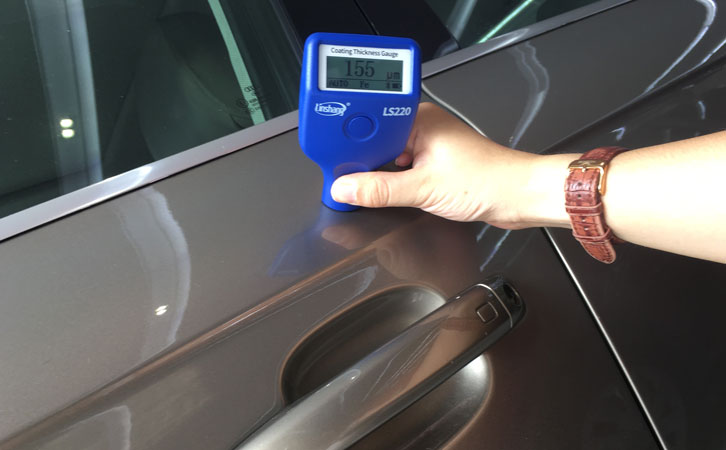Evaluate the Used Car With Automotive Paint Thickness Gauge
Chinese National reference standards for automotive paint:
The "QC T 484-1999 Paint Quality Standard" clearly requires that the paint surface thickness be at least 120μm. For most cars, the automotive paint thickness is typically between 120-180μm. Of course, this value is not so absolute. There are also deviations for the paint thickness of different brands, different models and different prices. Generally speaking, the paint thickness of the Japanese car is too thin and the American, German car paint thickness is usually thick. Therefore, car roof paint thickness is usually regarded as a reference if we want to know whether the car door has been replaced or not. Today we use the Linshang LS220 automotive paint thickness gauge to show you how to use this instrument to judge whether the door has been replaced.
LS220 automotive paint thickness gauge test the car door
We know that the probability of scratches on the roof is generally the lowest, so now we take the roof paint thickness as a reference. We take 5 points on the roof, which are located in the middle, front, back, left and right. Each spot was test for 3 times and take the average value. Then we finally take the average value of these five average values. Suppose this value is 150μm.
Take 5 points in the middle, front, back, left and right on each door. Test each point for three times and take the average value. Then we take the final average value of these five average values. If this value is close to 150μm, it means the door has not been replaced. If this value is very different from 150, the car door may be replaced.
For more information about the coating thickness gauge, please refer to the following articles.
- High precision coating thickness gauge for used car
- Automotive paint protection films coating thickness gauge
- Plating Thickness Measuring Instrument for Detecting Anti-corrosion Coating
- Linshang LS220, LS191, LS160A– Necessary for Car Cover Inspection
- Coating Thickness Gauge for Second Hand Vehicle
- Zero Adjustment Step of Coating Thickness Gauge
